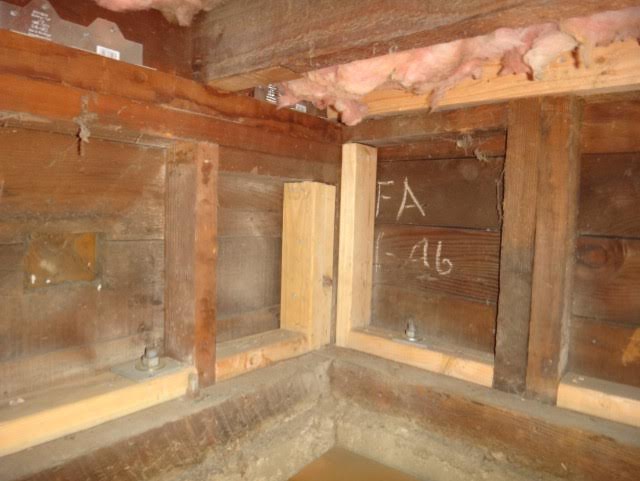By Jessica O’Sullivan, Temblor
Check your seismic hazard rank

Why retrofit?
It all started when Craig and Lindamarie learned they could protect themselves from “the big one.”
Craig and Lindamarie’s home lies close to several faults and, having been built in 1914, was not designed to withstand seismic activity. They learned that the leading issue for homeowners is a lack of seismic bracing in a home’s crawlspace. At this point, they knew they wanted a seismic retrofit. The couple became aware of the value of retrofitting at a presentation by Temblor co-founder and CEO, Ross Stein, in February 2016 in the MPSF Speaker Series.
They decided against insurance due to the high cost of insuring a 90-year-old home. The California Earthquake Authority, and competing private insurers, require homeowners pay losses equal to 5% – 25% of the insured value of their home before insurance kicks in; this is the ‘deductible.’ But, in a high cost market like the Bay Area, even 5% can sometimes exceed the funds a family has on hand. For a 2,750-square foot home in Redwood City, it would cost about $2,800 per year to insure with a 15% deductible. But, after a retrofit, the premium drops to about $2,250. So, if Lindamarie were to also get insurance, the retrofit would pay for itself in about a decade. This is yet another benefit of retrofit.

The process
One of Lindamarie’s greatest challenges was finding a contractor to do the work. She got referrals from neighbors, a realtor, and through online research. She lamented that the construction boom in the Bay Area meant that many of the good contractors were too busy to accept new clients – or even answer phone calls. “We started to feel like we were stalking companies in order to give them our business.”
After several months trying to get an estimate, she found five contractors that provided her with quotes. She received the quotes in May, and the retrofit, which took two weeks to complete, was completed in September the same year.
“My contractor and his crew were responsive to all our questions and made sure we understood what the process would involve and what they were doing each day. The workers were very considerate and they always made sure to clean-up our property.” Lindamarie said. The crew also took pictures of the work being performed and informed Craig and Lindamarie of unrelated issues in the crawlspace. This extra step led to the identification of a broken drain pipe they would not have known about without the crew’s assistance. This is a hidden benefit of a retrofit: Other foundation, conduit, or electrical problems can be identified and fixed before they become a problem.
While the process went as planned, it wasn’t without challenges. Lindamarie works from home and described the sounds of drilling and nailing akin to having their house undergo a “root canal”. There was also a fair amount of dust that came up through the floorboards on the perimeter of house and the edges of the heat registers in the floors on the days the crew had to drill into the foundation. She came up with the idea of putting plastic over any registers to help keep the dust down.


Advice from a homeowner
If possible, obtain multiple estimates and references if you don’t have any contractor referrals. Ask for a breakdown of the costs, and ask what work is critical and what work can wait for later if you aren’t able to have it all done at once. A seismic retrofit is an upgrade that you can’t see. Knowing where your money is going, and being an active participant in the retrofit process, helps make concrete the purpose of the expense.
Although the California Earthquake Authority has an online course and credentialing process, there is only some standardization for retrofit work, and there is no retrofit licensing. To an extent, you are going to be responsible for watching the work done on your home. Every retrofit in the Bay Area and San Francisco requires a city inspector to check the completed construction. Being present when they do their check insures the inspector will actually go in the crawlspace.
Ask for ‘Before and After’ photos. They may not be exciting but having the information is important.
She also recommended you get a contractor in to accommodate the retrofit plan for any future modifications. Are you planning on remodelling your kitchen? Is the location of your gas pipeline and electrical lines going to change? The retrofit can interfere with future construction if you don’t consider it ahead of time.
The last and most important point is to recognize that a ‘bolt and brace’ retrofit is not a guarantee that your home will survive the next big earthquake without damage, but it will likely fare much better than the original home would have. The Temblor app estimates that by retrofitting this home, its most likely damage would drop by $25,000 over 15 years, or $47,000 over 30 years. This is 3-5 times larger than the retrofit cost, and so Lindamarie spent wisely to protect her home and family.
- Earthquake science illuminates landslide behavior - June 13, 2025
- Destruction and Transformation: Lessons learned from the 2015 Gorkha, Nepal, earthquake - April 25, 2025
- Knock, knock, knocking on your door – the Julian earthquake in southern California issues reminder to be prepared - April 24, 2025
